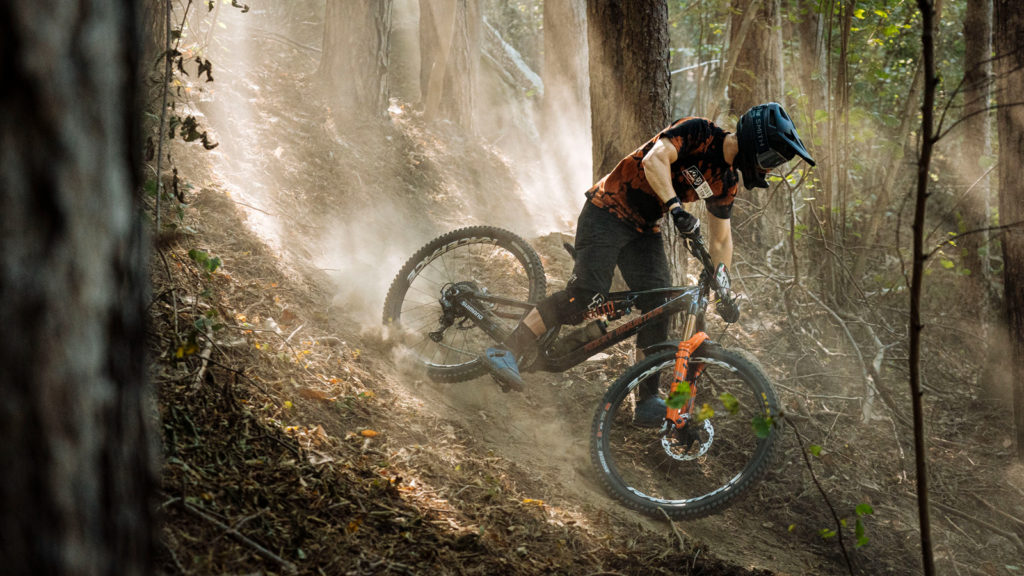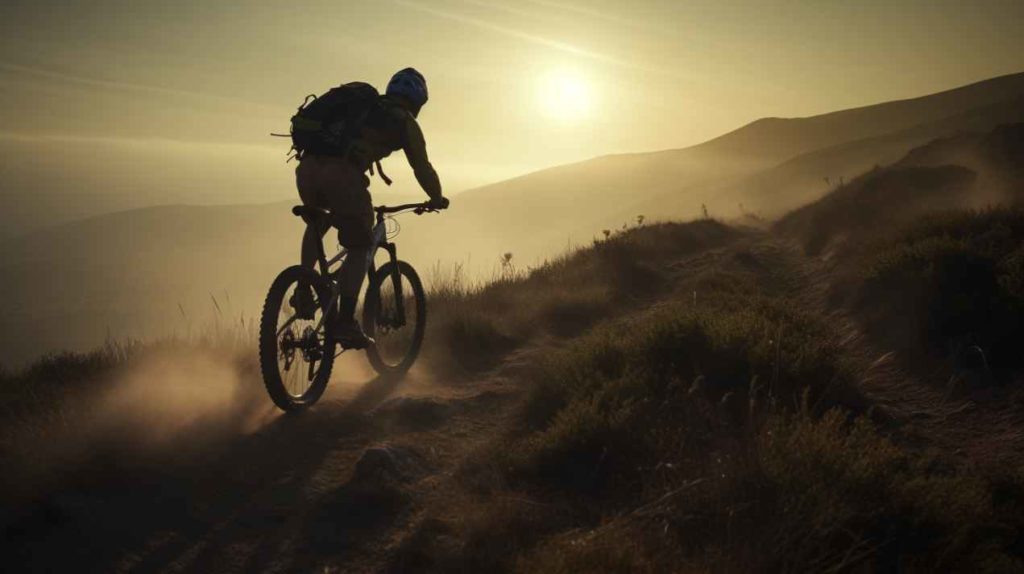Mountain biking has experienced a remarkable rise in popularity, captivating outdoor enthusiasts and adventure seekers around the world. This exhilarating sport has a rich and fascinating history that has contributed to its widespread appeal. Dating back to the mid-20th century, mountain biking evolved from a niche activity to a global phenomenon.
Exploring the origins of mountain biking unveils a story of innovation and passion. It emerged as a distinct discipline in the late 1960s and early 1970s, primarily in California. A group of cyclists, known as the “Bombers,” began modifying their bicycles to take on off-road terrains, giving birth to this thrilling two-wheeled adventure.
Over the years, key proponents and events played a pivotal role in propelling mountain biking into the mainstream. The 1970s saw the establishment of the first mountain bike races, like the Repack Downhill Race. These events showcased the sport’s potential and attracted more enthusiasts, pushing its boundaries.
In recent years, mountain biking has experienced unprecedented growth. Its popularity has skyrocketed, driven by factors such as increased accessibility, evolving technology, and a growing appreciation for outdoor activities. Riding through rugged trails and immersing oneself in nature has become a favored pastime for individuals seeking both physical exhilaration and a sense of connection with the natural world.
The Benefits of Mountain Biking
Mountain biking offers a multitude of benefits that go beyond the adrenaline-fueled adventure it provides. Engaging in this thrilling outdoor activity brings a range of advantages to both the body and mind, while also promoting environmental sustainability.
Physical Health Benefits
One of the primary advantages of mountain biking is the positive impact it has on physical fitness. As you navigate the trails, your cardiovascular system gets a significant workout, leading to improved heart health and increased endurance. The vigorous pedaling and maneuvering require the engagement of various muscle groups, resulting in overall strengthening and toning of the body. Not only does mountain biking provide an enjoyable way to stay active, but it also helps with weight management and can contribute to the prevention of chronic diseases.
Mental Health Advantages
Mountain biking not only benefits the body but also has profound effects on mental well-being. It serves as an excellent stress reliever, allowing riders to escape the daily pressures and immerse themselves in a natural and serene environment. The release of endorphins during physical activity helps boost mood and combat anxiety or depression. The sheer thrill of conquering challenging trails fosters a sense of accomplishment and promotes self-confidence. Connecting with nature, breathing in the fresh air, and appreciating scenic landscapes while riding on two wheels provides a meditative and rejuvenating experience for the mind.
Environmental Benefits
Aside from the personal advantages, mountain biking also aligns with environmental sustainability goals. By embracing this eco-friendly mode of transportation, enthusiasts contribute to reducing their carbon footprint. Choosing pedal power over motorized vehicles helps decrease air pollution and minimizes the negative impact on natural habitats. Additionally, the promotion of shared trails and responsible riding practices fosters a sense of environmental stewardship within the mountain biking community, encouraging the preservation of the great outdoors for future generations.
Mountain biking has proven to be a holistic activity that brings numerous benefits to individuals and the environment alike. From improved physical fitness and mental well-being to the advocacy of eco-conscious practices, this exhilarating sport continues to attract enthusiasts worldwide. As we look into deeper into the various aspects of mountain biking, we will uncover more reasons why it has gained such popularity in recent years.
Mountain Biking for All Ages and Skill Levels
Mountain biking is a versatile outdoor activity that caters to individuals of all ages and skill levels. Unlike some sports that have age restrictions or require extensive training, mountain biking offers an inclusive experience for everyone.
For children eager to explore the world on two wheels, mountain biking provides an excellent opportunity to develop their physical abilities and connect with nature. Many locations now have designated beginner-friendly trails specifically designed to introduce kids to the sport. These trails feature gentle slopes, shorter distances, and easier obstacles, ensuring a safe and enjoyable riding experience for young adventurers.
Adults who wish to embark on a mountain biking journey will also find a welcoming community and various resources to support their learning and progression. Local bike shops and outdoor recreation centers often offer clinics and workshops catered specifically to beginners. These sessions cover the fundamentals of mountain biking, such as bike handling skills, basic maintenance, and trail etiquette.
Beginner-friendly trails are not only limited to children, but also open to novices of all ages. These trails are generally well-maintained, clearly marked, and devoid of extremely technical features that may be challenging for new riders, providing a smooth transition into the world of mountain biking.

As riders gain confidence and experience, they can explore more advanced techniques and face greater challenges. Mountain biking offers a progression that allows individuals to continually enhance their skills and push their limits. Riders can choose to navigate steep descents, conquer technical terrain, and conquer obstacles like rocks, roots, and jumps.
Experienced mountain bikers often seek out more rugged and demanding trails to test their abilities and experience the thrill of conquering formidable terrains. These trails make use of natural features to create thrilling experiences, such as tight switchbacks, challenging climbs, and exhilarating downhill sections. As riders advance, they may even participate in organized group rides or events to further challenge themselves and connect with like-minded enthusiasts.
It is important to remember that safety should always be a priority, regardless of skill level. Proper protective gear, such as helmets, knee pads, and gloves, should be worn at all times. Additionally, riders should continually evaluate their own abilities and choose trails and challenges that match their current skill level to ensure an enjoyable and safe mountain biking experience.
In the next section, we will look into into the thrilling aspects of mountain biking and explore the adrenaline rush associated with this exhilarating outdoor activity.
The Thrill of Mountain Biking
Mountain biking is a sport that truly exhilarates both the body and the mind. From the moment you hop onto your bike and begin pedaling, you can feel the rush of adrenaline coursing through your veins. Every twist and turn, every bump and jump brings a sense of exhilaration that is difficult to replicate in any other activity.
The adrenaline rush experienced during mountain biking is attributed to the combination of speed, technicality, and the natural terrain. The sheer speed at which you navigate down a mountain trail, with the wind rushing past your face, creates a thrilling sensation. The sport demands a high level of focus and concentration as you maneuver through challenging terrains, which adds to the excitement.
But don’t just take our word for it. Countless mountain biking enthusiasts can attest to the incredible thrill this sport provides. Take Sarah, for example, an avid mountain biker who describes the adrenaline rush as an addictive experience. She recalls the exhilarating feeling of conquering steep descents and the sense of accomplishment after successfully navigating through narrow trails.
Another mountain biker enthusiast, Mark, has a fascinating anecdote that captures the heart-pounding nature of the sport. During a ride in a picturesque mountain range, he came across a breathtaking view at the top. With a combination of fear and excitement, he took on a daring descent, feeling the thrills of the adventure as he raced downward, surrounded by stunning scenery.

Mountain biking is not just about the adrenaline rush, though. It offers a sense of freedom and connection with nature that few other activities can match. As you explore famous mountain biking trails and destinations, such as the exhilarating singletracks in Moab, Utah or the breathtaking landscapes of Whistler, Canada, you are immersed in a world of awe-inspiring beauty. The untouched trails, stunning vistas, and the serenity of nature create an experience that is as rewarding as it is adventurous.
Mountain Biking as a Competitive Sport
Within the realm of mountain biking, there exists a diverse range of disciplines that cater to different riding styles and preferences. Two prominent disciplines that have gained significant attention are cross-country (XC) and downhill (DH) mountain biking.
Cross-country mountain biking emphasizes endurance and stamina as riders tackle long and challenging off-road trails. Athletes participating in XC races not only require exceptional physical fitness but also strategic planning to navigate through varying terrains and obstacles efficiently. The demand for cardiovascular strength and technical skills makes it an exhilarating discipline to watch and participate in.
On the other hand, downhill mountain biking is more focused on speed and adrenaline. Riders tackle steep descents, jumps, and rock gardens, pushing the limits of their biking skills. Gravity plays a significant role here, as riders navigate through the course, relying on their reflexes and bike control to maneuver tight corners and maintain stability at high speeds. Downhill competitions often provide spectators with heart-stopping moments as riders showcase their courage and expertise.
Professional mountain biking competitions and championships have emerged to celebrate the skills and talents of these athletes. Events such as the UCI Mountain Bike World Cup attract riders from around the globe, vying for supremacy in various disciplines. The competition brings together passionate and dedicated athletes who have honed their craft through years of training and experience.
Aside from individual competitions, mountain biking has also left its mark on major international sporting events, including the Olympic Games. In recent years, mountain biking has become an Olympic discipline, gaining recognition for its thrilling and challenging nature. The inclusion of mountain biking in the Olympics has further solidified its status as a legitimate sport, attracting a broader audience and inspiring future generations of riders.
The Influence of Technology on Mountain Biking
Technology has revolutionized the world of mountain biking, bringing about remarkable advancements in design, gear, and overall riding experiences. With the constant progress in technology, mountain bikers now have access to cutting-edge innovations that enhance their time on the trails.
One significant area where technology has made a significant impact is in mountain bike design and gear. Engineers and manufacturers have continuously pushed the boundaries to create lighter, stronger, and more efficient bicycles. The introduction of advanced suspension systems, carbon fiber frames, and tubeless tires has remarkably improved riders’ comfort, control, and performance.
Digital tools have also become an integral part of the mountain biking experience. Riders can now utilize specialized apps and GPS trackers to plan their routes, track their rides, and even compete with friends and fellow enthusiasts. These digital aids provide real-time data on speed, distance, elevation, and heart rate, enabling riders to challenge themselves and analyze their progress.
Moreover, social media has played a pivotal role in propelling the visibility and growth of the mountain biking community. Platforms like Instagram, YouTube, and Facebook allow riders to share their thrilling experiences, stunning trail photos, and informative content. This virtual connectivity has created a global network of riders, fostering camaraderie, and inspiring others to explore the world of mountain biking.
FAQ
1. What are the origins of mountain biking?
The origins of mountain biking can be traced back to the 1970s when cyclists began modifying their bikes to ride off-road. The sport gained popularity in the United States, specifically in California, with riders seeking new challenges and terrain.
2. What are the physical health benefits of mountain biking?
Mountain biking offers various physical health benefits, including cardiovascular fitness, as it is a great aerobic exercise. It also helps in muscle strengthening, particularly in the legs, core, and upper body due to the continuous pedaling and maneuvering over uneven terrain.
3. Can beginners and children participate in mountain biking?
Absolutely! Mountain biking is an inclusive sport suitable for individuals of all ages and skill levels. There are beginner-friendly trails and resources available for newcomers, and many biking communities offer lessons and guided rides to help beginners get started.
4. What is the allure of mountain biking?
Mountain biking provides an adrenaline rush and a sense of adventure for riders. The thrill of navigating challenging terrain, exploring nature, and pushing personal limits contributes to the allure of the sport. Many avid mountain bikers also find solace and a connection with nature while engaging in the activity.
5. Is mountain biking considered a competitive sport?
Yes, mountain biking is recognized as a competitive sport with various disciplines, including cross-country, downhill, and enduro. There are professional competitions and championships held worldwide, showcasing the skills and abilities of athletes. Mountain biking has also made its mark in prestigious events like the Olympic Games.

